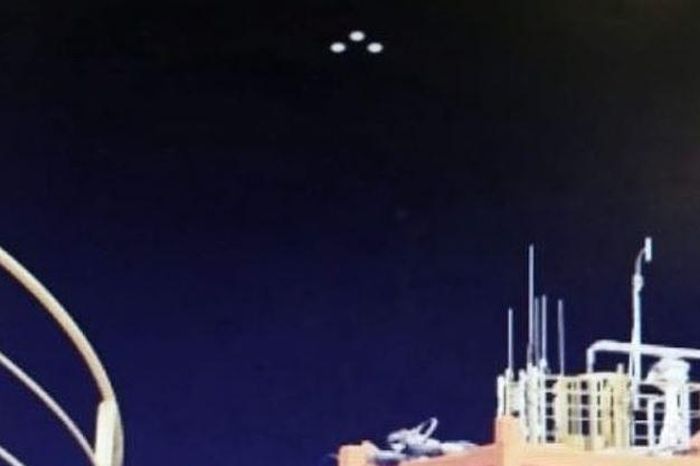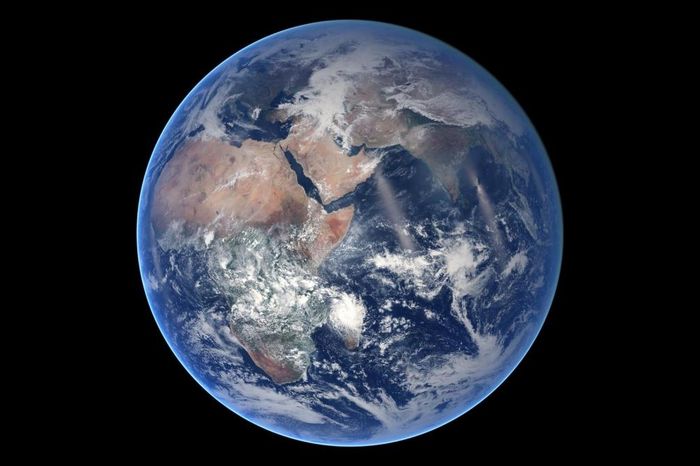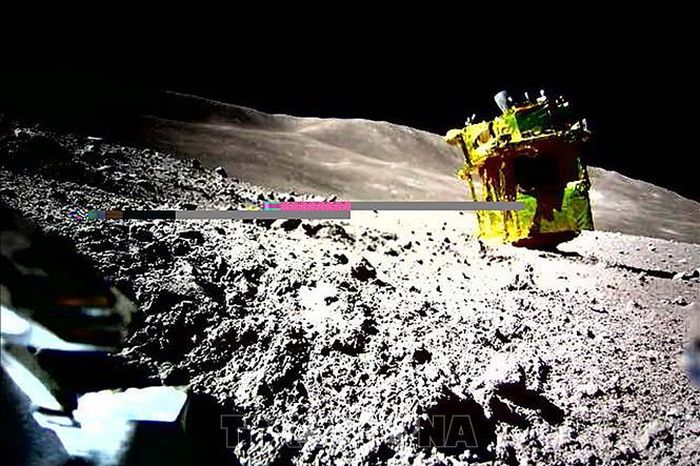The galaxy containing Earth has a 'second heart', which is 13 billion years old
A team of scientists led by Dr. Khyati Malhan and Dr. Hans-Walter Rix from the Max Placnk Institute for Astronomy has found two ancient star streams Shakti and Shiva, which served as the original "building blocks" of the galaxy containing Earth. Land.
Scientists used data from the Gaia Sky Mapping Satellite, a powerful space telescope of the European Space Agency (ESA).

According to Sci-News, the two giant star streams are up to 13 billion years old.
And just as the two names were given - Shakti and Shiva are two important gods in Hinduism - over a period of more than 12 billion to 13 billion years ago, they merged into the structure of the early Milky Way and plays a crucial role in helping the galaxy grow rapidly.
Scientists discovered them by chance, unexpectedly. Because the Milky Way has changed significantly since its "inception," finding the original building blocks is almost out of reach.
But despite the passage of time, at the center of the galaxy, two streams of stars still stand out.
"When we visualized the orbits of stars in the region, these two structures stood out from the rest, with a certain chemical composition," Dr. Khyati said.
Dr. Rix further explained that stars belonging to the Shakti and Shiva star lines are so ancient that they lack heavy metal elements - which were only created when the universe was quite old.
They call these two streams of stars - which cluster in the center of the galaxy - the "old and poor heart" of the Milky Way.
According to widely accepted cosmological theories, the early universe consisted of only a few light elements at the top of the periodic table.
The first stars were also made mainly of these elements, so they were extremely poor in metals. But the nuclei of stars themselves are the reactors that help heavier elements to be forged.
At the end of their lives, stars explode and release more heavy elements into the universe. New generations of stars are formed with richer elements and continue to forge new, heavier elements.
It took 13.8 billion years for the universe to be as chemically rich as it is today. So anything so chemically poor, it probably belongs in the early universe.
The discovery of Shakti and Shiva helps scientists further complete the mosaic of the formation of the galaxy containing Earth.
In addition, other previously known pieces that make up the ancient heart of the early Milky Way include Gaia-Sausage-Enceladus, LMS1/Wukong, Arjuna/Sequoia/I'itoi and Pontus.
They are streams of stars, long filaments of gas and dust, generally giant and strange structures compared to what belongs to the modern universe.
All contribute to filling out the family tree and historical pages of the Milky Way, something the Gaia mission has worked hard to build over the past decade.
Max Plack's group's research was published in the scientific journal Astrophysical Journal.
You should read it
- What happens when you travel through the heart of the earth?
- New discovery: Iron snow rains are happening inside the Earth's core
- How long does it take you to reach the other half through the center of the Earth vertically?
- How will a meteorite be found to crash into NASA Earth?
- History of Earth formation and 25 milestones (Part I)
- Google Earth is now available on most popular browsers
- Journey to the center of the Earth, interesting facts that not everyone knows
- What happens when the Moon is close to Earth, at a distance of 420 km like the International Space Station (ISS) today?
May be interested
- New technology stores data for 1 billion years
 researchers demonstrated a type of storage memory using carbon nanotubes with the ability to store up to 1 trillion bits per square inch over a period of 1 billion years.
researchers demonstrated a type of storage memory using carbon nanotubes with the ability to store up to 1 trillion bits per square inch over a period of 1 billion years. - Photos of the 'Old Earth and Now': How has the Earth changed over the last 100 years?
 below is a picture of the incredible change of the earth over the past 100 years recorded by nasa's aerospace and aerospace agency.
below is a picture of the incredible change of the earth over the past 100 years recorded by nasa's aerospace and aerospace agency. - The majesty of the largest galaxy cluster ever known under the eyes of the $10 billion telescope
 nicknamed el gordo, or fat galaxy cluster, this galaxy cluster is thought to be more than 2 million billion times the mass of the sun.
nicknamed el gordo, or fat galaxy cluster, this galaxy cluster is thought to be more than 2 million billion times the mass of the sun. - Official information about Samsung Galaxy S8, S8 Plus: Price, date of sale, specifications and special features
 samsung's product launch event took place in the heart of the next generation of flagship phones, samsung galaxy s8 and samsung galaxy s8 plus. the following article will summarize all information about prices, sales dates, specifications and information regarding samsung galaxy s8 and samsung galaxy s8 plus.
samsung's product launch event took place in the heart of the next generation of flagship phones, samsung galaxy s8 and samsung galaxy s8 plus. the following article will summarize all information about prices, sales dates, specifications and information regarding samsung galaxy s8 and samsung galaxy s8 plus. - You will be startled when watching the video describing the process of Earth's hotness in the past 100 years
 for more than 100 years, the earth has become warmer and the average temperature in many parts of the world is constantly increasing to an alarming level.
for more than 100 years, the earth has become warmer and the average temperature in many parts of the world is constantly increasing to an alarming level. - The moon has a life expectancy of about 4.51 billion years - bigger than we think and so does life
 earth's companion - the moon may have been formed within 60 million years after the solar system was born, and established a new phase for previous evolution of human life. .
earth's companion - the moon may have been formed within 60 million years after the solar system was born, and established a new phase for previous evolution of human life. . - Where did all the origins come from?
 the ancestors of life on earth have been discovered by scientists, they are a single-celled, bacterium-like organism and have appeared on earth 3.8 billion years ago.
the ancestors of life on earth have been discovered by scientists, they are a single-celled, bacterium-like organism and have appeared on earth 3.8 billion years ago. - Signs of heart disease should not be ignored
 the heart is an important part of the human body, but if the heart encounters these signs, you need to be aware, maybe your heart is having problems.
the heart is an important part of the human body, but if the heart encounters these signs, you need to be aware, maybe your heart is having problems. - Journey to the center of the Earth, interesting facts that not everyone knows
 to reach the core of the earth, in this journey we need to use a drill through the ground, to cross the long distance of about 6,381km.
to reach the core of the earth, in this journey we need to use a drill through the ground, to cross the long distance of about 6,381km. - The discovery of the 'Second Earth' can exist only 4.2 light-years away from Earth
 scientists at the european southern observatory (eso) have discovered an earth-like rock planet outside the solar system. in particular, it is only 4.2 light-years from earth and life can exist. with that distance, people can set foot on this planet in the near future.
scientists at the european southern observatory (eso) have discovered an earth-like rock planet outside the solar system. in particular, it is only 4.2 light-years from earth and life can exist. with that distance, people can set foot on this planet in the near future.










 NASA is about to launch 3 rockets to 'penetrate' the solar eclipse
NASA is about to launch 3 rockets to 'penetrate' the solar eclipse 'Snacking' UFO images at 'secret alien base'
'Snacking' UFO images at 'secret alien base' How much does the Earth weigh?
How much does the Earth weigh? Japan's lunar probe 'fell asleep' again
Japan's lunar probe 'fell asleep' again The microbiome in desert lagoons may reflect early life on Mars
The microbiome in desert lagoons may reflect early life on Mars Countries are stepping up efforts to search for extraterrestrial life
Countries are stepping up efforts to search for extraterrestrial life